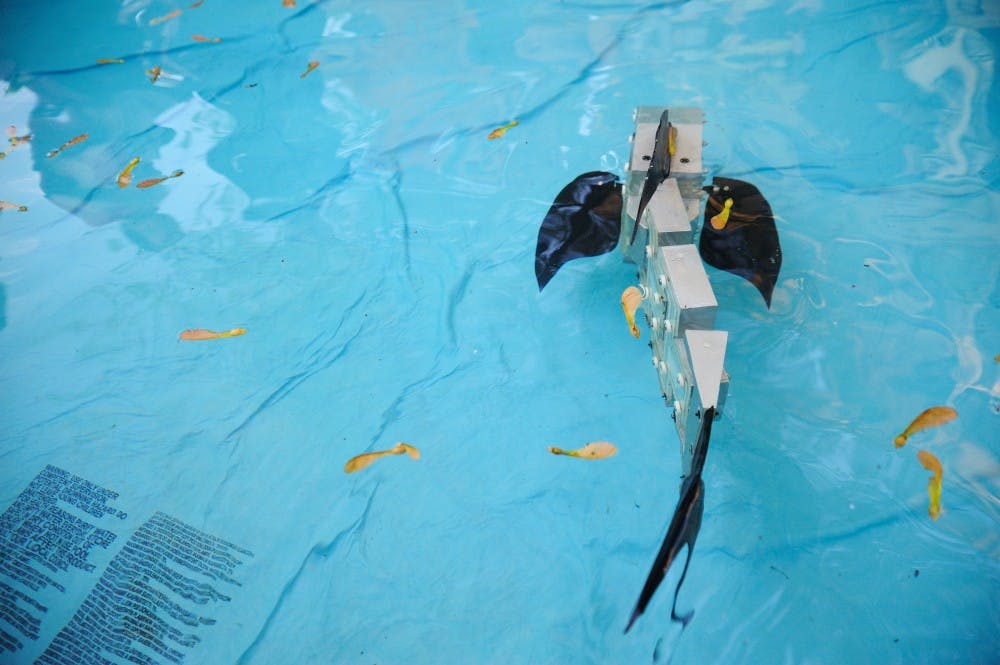How could humans study underwater life up close without disruption?
Researchers from the Computer Science and Artificial Intelligence Lab at the Massachusetts Institute of Technology (MIT) conceptualized a biomimetic fish that could swim alongside marine life. The robotic fish is classified as an autonomous underwater vehicle (AUV) capable of observation, motion and communication.
The MIT researchers engineered what they call a “soft robotic fish (SoFi)” which is an improvement on previous robotic fish prototypes.
SoFi measures 0.47 meters by 0.23 meters by 0.18 meters and weighs 1.6 kilograms. It moves forward using its elastomer tail and external gear pump. It is equipped with dive planes and a buoyancy control unit (BCU) which allows for vertical movement. The robotic fish swims at an average of 21.7 centimeters per second, close to the speed of a typical fish.
Robert Katzschmann, one of the leaders of the team and a corresponding author, shared his experience in a recent press release.
“I was amazed at how well it was working, how well I was able to get this tail to beat back and forth or swim left and right, like a shark or some other fish,” Katzschmann said. “But we wanted to show this wasn’t just working on a test bench or table top.”
Modern maritime robots are not able to sufficiently study underwater life in their natural state. Most AUVs use jet-based propulsion systems that disrupt the environment and prevent close-up observations.
These robots also typically require a tethered operation. SoFi can operated untethered, with more advanced movement in all three dimensional. SoFi can also operate remotely with a human diver, withstand lower depth and automatically adjust to buoyancy.
Communication is critical for AUV navigation and performance. However, many obstacles still exist.
Radio frequency signals are weakened in saltwater and optical communication is easily scattered and surrounding light interferes with signal reception. Therefore, researchers opted for acoustic communications. By designing a compact communication system, researchers were able to transmit short commands to SoFi.
During communication tests, researchers found that SoFi could transmit data at 16-bit words once per second. A diver can control multiple aspects of motion using a custom communication modem including the robot’s thrust, tail movement frequency, depth and turn angle.
Effective communication can be established up to 10 meters when SoFi’s motors are off and five meters when its motors are on.
SoFi holds an onboard camera that films its underwater journey. Powered with a 35 watt-hour battery, SoFi can dive for an average of around 40 minutes. Sofi has been able to swim several hundred meters, observing fish and their interactions from less than a meter away without causing fish to flee.
As SoFi approached other fish, they did not change their swimming trajectory. A few fish even swam parallel to SoFi, indicating that SoFi is able to “blend in” with other fish.
So what’s next for the robotic fish?
“Our primary goal was to make something for biologists,” Katzschmann said.
In their research paper, the MIT group listed a few goals for the future which include long-term study using SoFi without human interference, the ability for SoFi to influence underwater life and the creation of multiple robotic fish.























Please note All comments are eligible for publication in The News-Letter.